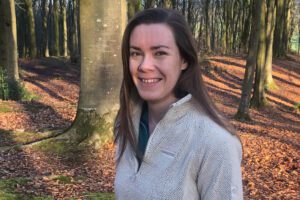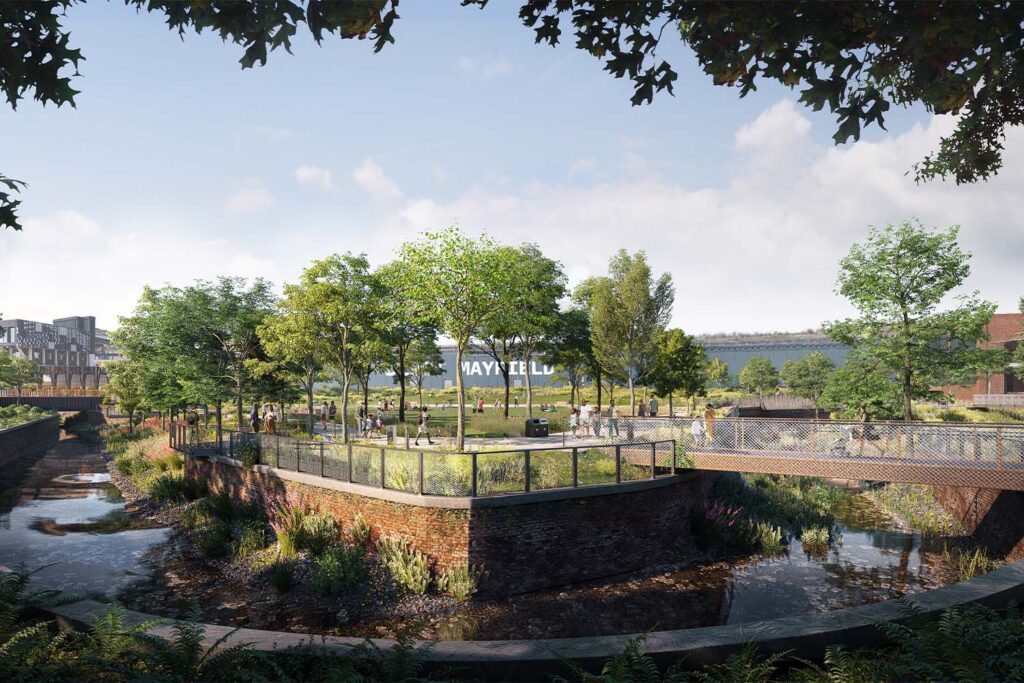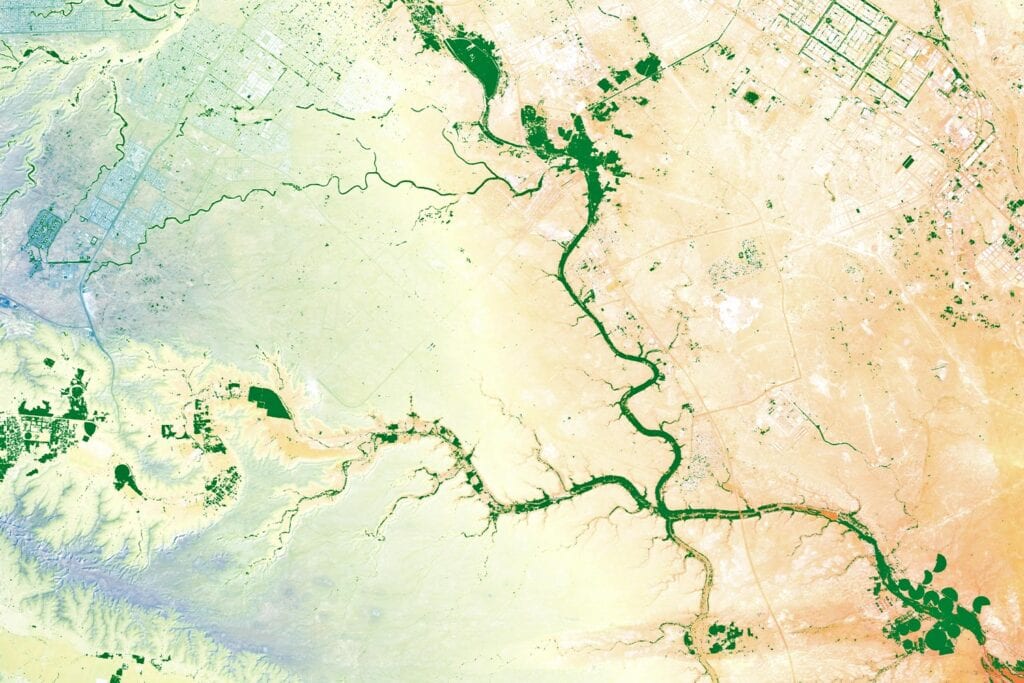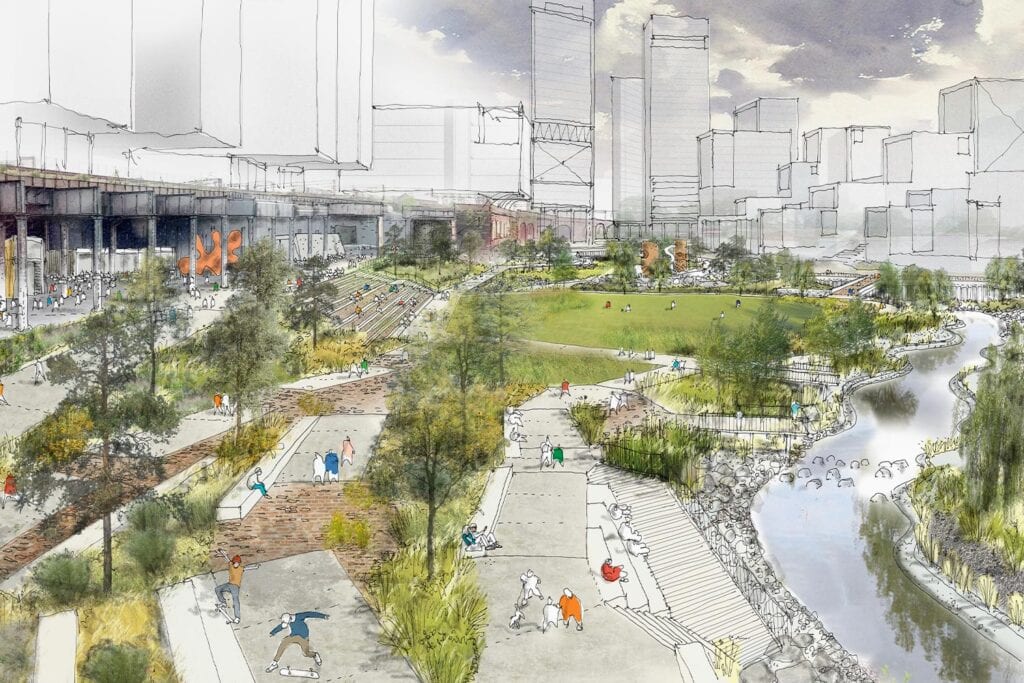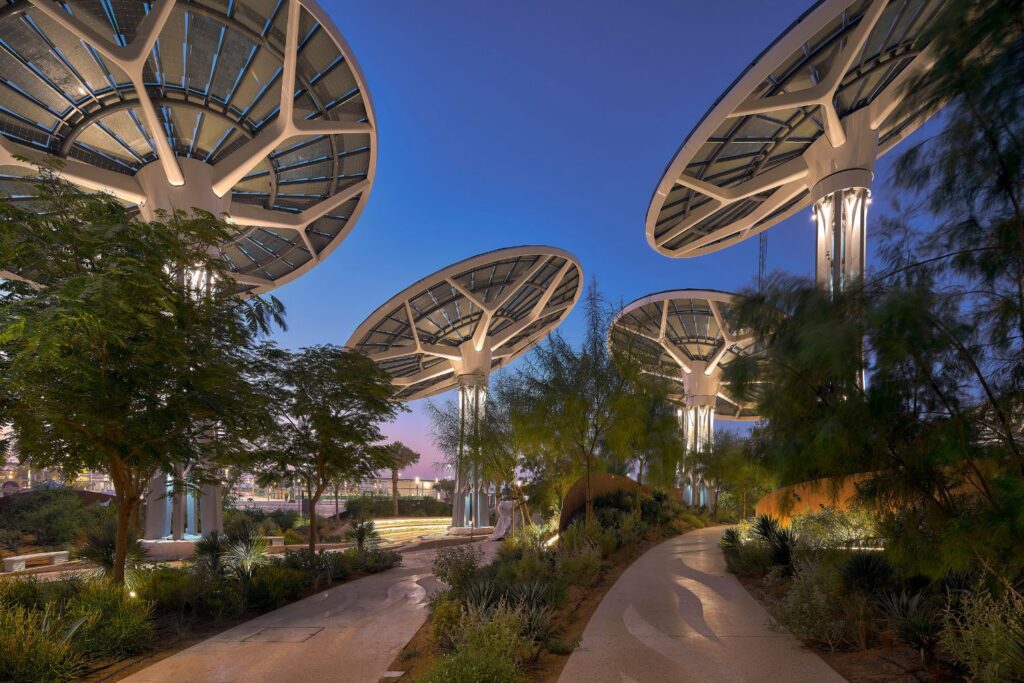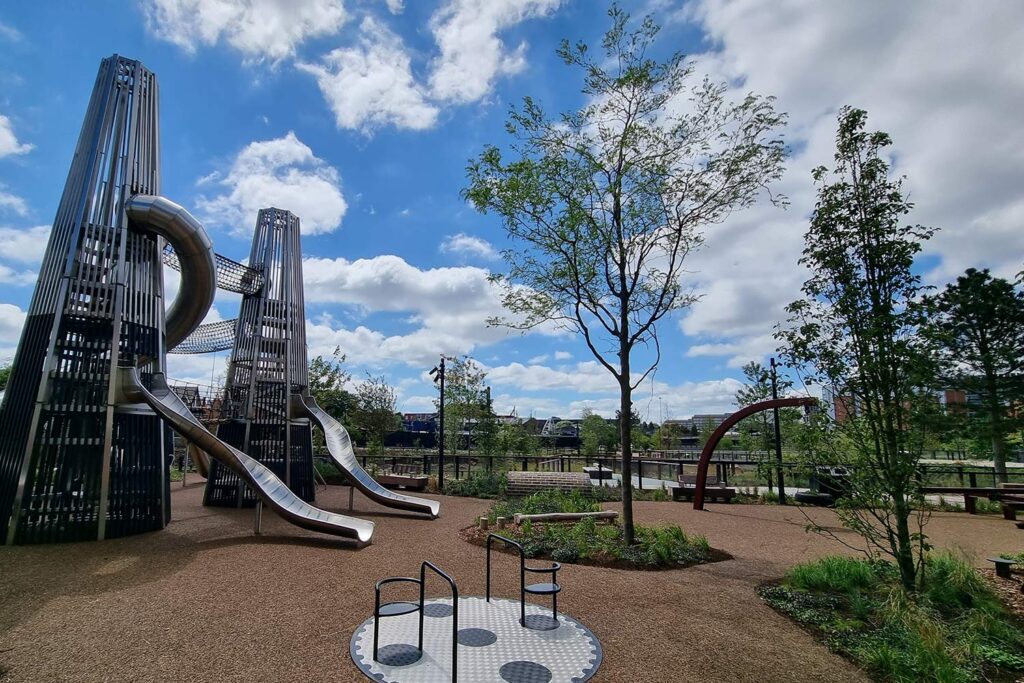Mayfield Park claims a CIEEM Award
On Wednesday 28th June 2023, Mayfield Park claimed a Chartered Institute of Ecology and Environmental Management (CIEEM) Award for Best Practice – Innovation. The Mayfield Park development was also shortlisted under the Best Practice Large-Scale Mitigation category.
The CIEEM Awards seek to celebrate outstanding ecological and environmental management practice across the UK and Ireland. There are a variety of award categories that seek to recognise individual and consultancy contributions, climate and nature action, best practice mitigation across a range of project sizes, and displays of innovation in project design or approaches.
Buro Happold’s ecology and biodiversity management team is comprised of professional ecologists and environmental consultants who strongly uphold CIEEM’s code of conduct and strive to move the projects we work on past compliance into providing tangible biodiversity and environmental gains.

The Mayfield Partnership are transforming a 24-acre site in central Manchester into a vibrant new district with sustainable ecology at its core as part of the 6.5-acre Mayfield Park.
The project sought to tackle long-term biodiversity loss in this part of the city, primarily through the re-opening of a long-forgotten section of the River Medlock. In a pioneering approach to collaboration, the Environment Agency Green Growth Team has provided advice throughout the project, working with the design team to ensure an optimal approach to river restoration whilst being sympathetic to site constraints.
Fundamental to the aspirations of the government’s 25-Year Environment Plan, the Park meets the following objectives; Recovering nature and enhancing the beauty of landscapes, Connecting people with the environment to improve health and well-being, and Protecting and improving our global environment.
From the outset, the design of the site wanted to recognise that delivering green open space is one of our best tools in fighting the climate and biodiversity emergencies in urban areas. By doing so, the river was treated as an asset to rejuvenate, rather than a constraint on the site to development. The naturalised river channel, with walls partially or completely removed, surrounded by natural vegetation, provides essential natural flood alleviation in high rainfall events. The 63,000 plants and 140 trees planted provide an urban cooling effect, provide more open ground for surface water infiltration and help to reduce air pollution from surrounding road networks. Furthermore, the park provides a space where this can all be enjoyed by local communities who previously had limited access to nature.
Mayfield Park is a great illustration of what can be achieved for biodiversity and local communities when urban redevelopment design carefully considers the natural assets of a site and seeks to work with them.
The Buro Happold Ecology and Biodiversity Team
Buro Happold’s ecologists have been part of the project development from the outset. Initially supporting the Strategic Regeneration Framework for the wider area, they continued throughout the design project stages. They ensured that impacts on the existing flora and fauna of the site were minimised and adequately mitigated. Additionally, they supported the incorporation of enhancements through the park, including specifying the correct native flora and fauna for the river corridor and supporting the park’s construction. There are now scrapes to pool water for birds and log piles and hibernacula acting as shelters for insects and other species. Other interventions include bird and bat boxes installed in the river wall, and across mature trees, to support the wildlife that uses rivers as corridors. Kingfishers, sand martins, and bats have been observed on-site and brown trout are now in this stretch of the river, after decades when aquatic biodiversity was poor. Together these interventions achieved over 90% net gain in biodiversity as measured through a metric-based approach.

Moving forwards, what the Mayfield Project has achieved so far should be seen as a precedence, and not an exception within the built environment industry. The multiple benefits that the Mayfield Park provides in terms of biodiversity, climate resilience, flood mitigation, health and wellbeing as well as social benefits means that other large-scale urban developments should take stock of what significant, well-designed open space in the heart of a development can achieve.
With biodiversity net gain becoming mandatory later this year, more focus needs to be made on the additional benefits of incorporating ecological enhancements and habitat creation within a site boundary, even if the site is located within the centre of a major urban town or city. Buro Happold has also worked on sites in the centre of London that successfully identify opportunities to revitalise existing natural assets whilst also providing additional benefits. One such example is Thameside West, where critical works to accommodate higher future flood levels for the River Thames allow for creation of significant intertidal habitats along the banks to support improved fish and invertebrate feeding grounds. In turn, this also provides an accessible and nicer river frontage for new site users to experience and enjoy. When coupled, with further site enhancements to produce new outdoor recreational space, the connectivity between the river and terrestrial space extends, promoting ecological corridors through urban environments which may otherwise block wildlife movements.

Whilst it is recognised that not all projects will have the space that Mayfield and Thameside West have, the incorporation of street trees, green roofs, and pollinator planting, even in highly urban settings will have additive effects on both biodiversity and climate resilience. The potential for beneficial effects from development needs to start looking wider than the red line and consider how changes to planting and green space can support a reduction in urban heating, and improvement in sustainable water attenuation and drainage whilst providing a pleasant environment for people to live and work. Inaccessible spaces, such as rooftops, and on top of bike and bin stores, should be capitalised for biodiversity provision, where more scruffy habitat areas can be created that will support invertebrates. As sites increasingly incorporate these measures, green networks start to appear across our cityscapes, creating new much-needed corridors the biodiversity.
